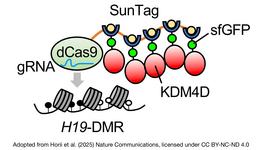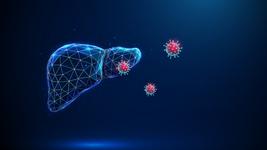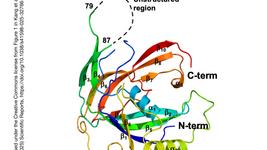Highlight: Microscopic Beads Supercharge CRISPR Virus Detection
CMN Intelligence - The World’s Most Comprehensive Intelligence Platform for CRISPR-Genomic Medicine and Gene-Editing Clinical Development
Providing market intelligence, data infrastructure, analytics, and reporting services for the global gene-editing sector. Read more...
The COVID-19 pandemic exposed critical gaps in diagnostic technology. While PCR tests offered high accuracy, they required expensive equipment. Antigen tests were portable but often missed infections with low viral loads. CRISPR-based diagnostics showed promise as a middle ground, but limitations prevented their widespread adoption in resource-limited settings.
The American team addressed these challenges by reimagining how CRISPR diagnostics could be implemented. Rather than relying on traditional fluorescent signals, they turned to microscopic beads as platforms for both signal amplification and sample organisation.
Their first innovation, bbLuc, transforms how CRISPR tests generate detectable signals. The team split a powerful light-generating enzyme called nanoluciferase into two parts, attaching each to different beads (see Figure 1). When the target virus is absent, these fragments remain separated and inactive. When CRISPR detects its viral target, it cuts RNA linkers holding the enzyme pieces, allowing them to reunite and produce bright luminescent signals.

This approach proved remarkably sensitive. In laboratory tests, bbLuc detected as few as 500,000 viral copies per microliter within 60 minutes, compared to 10 million copies required by standard fluorescent methods - a 20-fold improvement that could catch infections other rapid tests might miss.
Clinical validation using COVID-19 patient samples showed that bbLuc correctly identified 26 of 29 positive cases, compared to 23 for conventional methods. Critically, bbLuc caught three additional cases with low viral loads while correctly identifying all negative samples. Field testing in Nigeria confirmed these results, with bbLuc detecting all 12 positive samples within 60 minutes compared to only three detected by fluorescent methods.
The second innovation, bbCARMEN, addressed the challenges of multiplexed testing (see Figure 2). Rather than expensive microfluidic equipment, researchers developed colour-coded beads, each carrying detection reagents for specific viruses. The process involves attaching different CRISPR guide RNAs to distinctly coloured beads, then manually shaking the mixture with oil to create thousands of tiny droplets, each containing roughly one bead. CRISPR detection proceeds independently in each microscopic reaction chamber, with fluorescence microscopy revealing which viruses are present.

Testing bbCARMEN with a nine-virus respiratory panel yielded impressive results. The system distinguished between SARS-CoV-2, influenza A and B, respiratory syncytial virus, and other pathogens with sensitivity ranging from 2.5 to 40 copies per microliter. When validated with 47 COVID-19 specimens, bbCARMEN correctly identified 46 positive cases within 60 minutes, achieving a sensitivity of 97.9%.
Both systems proved adaptable to resource-limited settings. bbLuc reactions could be detected using smartphone cameras, with positive signals sometimes visible to the naked eye. Field deployment in Nigeria, utilising portable equipment, achieved results comparable to those of sophisticated research setups.
The implications extend beyond immediate clinical applications. Enhanced sensitivity could accelerate the development of diagnostics for new pathogens, while multiplexing capability could enable comprehensive virus panels where they were previously impractical. These tools provide crucial middle-ground options that balance PCR-level accuracy with antigen test deployability, potentially catching outbreaks earlier and in more locations than current technology allows.
The study was led by Sameed Siddiqui and Pardis Sabeti from Broad Institute of Massachusetts Institute of Technology and Cameron Myhrvold from Princeton University. It was published on 22 September in Nature Biomedical Engineering.
To get more CRISPR Medicine News delivered to your inbox, sign up to the free weekly CMN Newsletter here.
Tags
CLINICAL TRIALS
Sponsors:
Base Therapeutics (Shanghai) Co., Ltd.
Sponsors:
Base Therapeutics (Shanghai) Co., Ltd.







